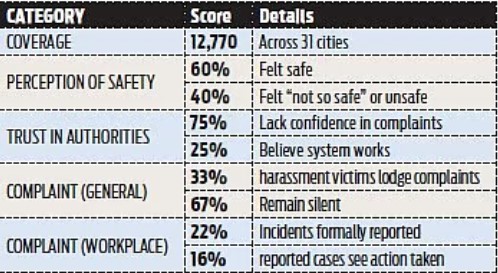Prelims – Current event of National and International importance| Issues related to women and safety.
Why in News?
Recently, National Annual Report & Index on Women’s Safety released based on a survey of 12,770 women across 31 cities.
|
Safest cities |
Low ranked cities |
|
Kohima, Vishakhapatnam, Bhubaneswar, Aizawl, Gangtok, Itanagar, and Mumbai lead national safety rankings. |
Patna, Jaipur, Faridabad, Delhi, Kolkata, Srinagar, and Ranchi were placed at the bottom of the index. |
|
Kohima and other top-ranked cities were associated with stronger gender equity, civic participation, policing and women-friendly infrastructure. |
Cities like Patna and Jaipur faced challenges due to Weak institutional responsiveness, Deep-rooted patriarchal norms, Deficient urban safety infrastructure. |

Reference
The Hindu| National Annual Report and Index on Women’s Safety